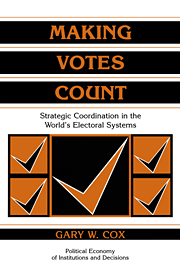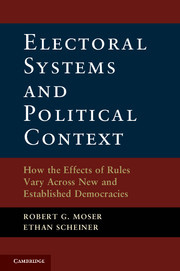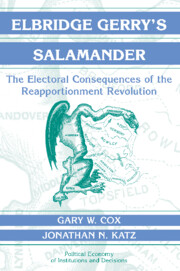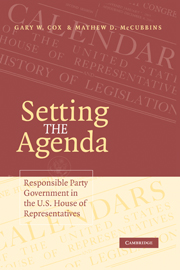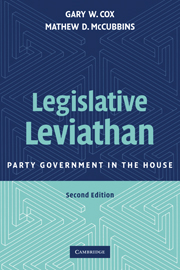Making Votes Count
Popular elections are at the heart of representative democracy. Thus, understanding the laws and practices that govern such elections is essential to understanding modern democracy. In this book, Cox views electoral laws as posing a variety of coordination problems that political forces must solve. Coordination problems - and with them the necessity of negotiating withdrawals, strategic voting, and other species of strategic coordination - arise in all electoral systems. This book employs a unified game-theoretic model to study strategic coordination worldwide and that relies primarily on constituency-level rather than national aggregate data in testing theoretical propositions about the effects of electoral laws. This book also considers not just what happens when political forces succeed in solving the coordination problems inherent in the electoral system they face but also what happens when they fail.
- Use of a unified game-theoretic model to generate theoretical propositions
- Use of constituency-level electoral data to test theoretical propositions
- Worldwide comparative perspective considers samples of 131 polities drawn from all regions of the world
Reviews & endorsements
"Every serious scholar of political systems should read this book....Cox is a master when it comes to explaining ideas generated by a logic-based theory....this book is a very important contribution to our knowledge about electoral systems. It will be the major book in this area for some time to come." Melvin Hinch, American Political Science Review
"...this is a great book, a must for all those interested in the study of elections. Cox powerfully demonstrates the fruitfulness of looking at the impact of electoral systems from the perspective of formal theory, provided this is combined with solid empirical analysis." André Blais, Canadian Journal of Political Science
"This book is a unique contribution to the fields of comparative politics and formal political theory. It offers a model integrating many diverse aspects of electoral competition that together bring into existence systems of national poltical parties. Gary Cox combines social choice theory, public choice theory, spatial theory, and the institutional approach to electoral studies to reach a new level of understanding of political competition in democracies. Gary Cox's new book is not only a theoretical study, but also a useful reference on comparative electoral institutions. ...the suthor also draws attention to such often overlooked institutions as rules of candidate nomination and party registration." Olga Shvetsova, Political Science Quarterly
Product details
No date availableAdobe eBook Reader
9781316046210
0 pages
0kg
12 b/w illus. 16 tables
This ISBN is for an eBook version which is distributed on our behalf by a third party.
Table of Contents
- List of tables and figures
- Series editor's preface
- Preface
- PART I. INTRODUCTION:
- 1. Introduction
- 2. Duverger's propositions
- PART II. STRATEGIC VOTING:
- 3. On electoral systems
- 4. Strategic voting in single-member single-ballot systems
- 5. Strategic voting in multimember districts
- 6. Strategic voting in single-member dual-ballot systems
- 7. Some concluding comments on strategic voting, PART III. STRATEGIC ENTRY:
- 8. Strategic voting, party labels and entry
- 9. Rational entry and the conservation of disproportionality: evidence from Japan
- PART IV. ELECTORAL COORDINATION AT THe SYSTEM LEVEL:
- 10. Putting the constituencies together
- 11. Electoral institutions, cleavage structures and the number of parties
- PART V. COORDINATION FAILURES AND THE DEMOCRATIC PERFORMANCE:
- 12. Coordination failures and representation
- 13. Coordination failures and dominant parties
- 14. Coordination failures and realignments
- PART VI. CONCLUSION
- 15. Conclusion
- Appendices
- References
- Subject index
- Author index.

